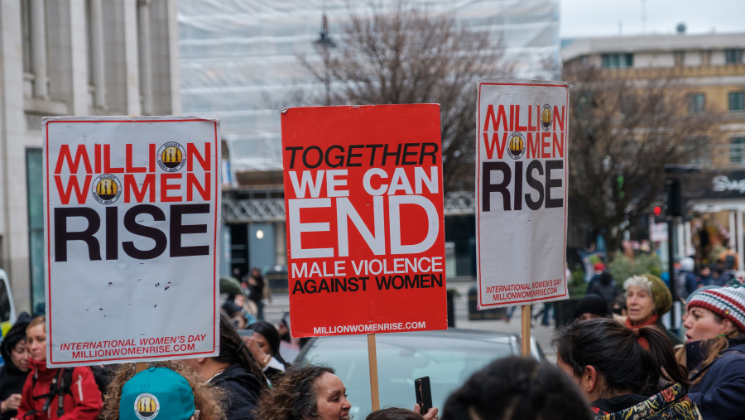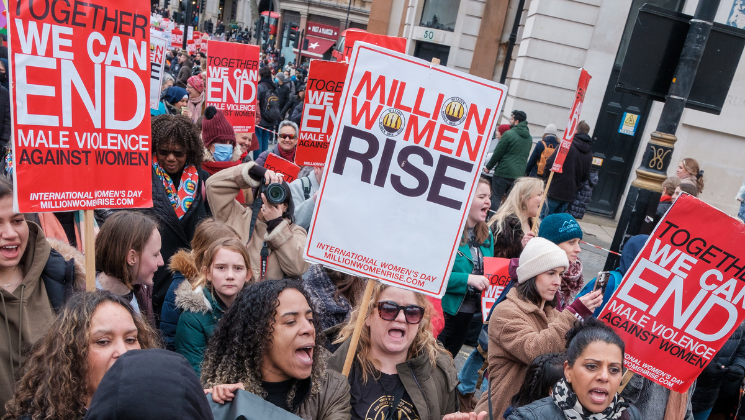And this is how you can raise awareness this October

October; the spooky season which is filled with autumnal vibes, pumpkin spiced lattes and H&M’s stunning new knitwear. And as much as we’re all excited to get cosy in the autumn and carve pumpkins and dress up for Halloween, you may or may not be aware that it is also National Domestic Abuse Awareness Month.
A bit of insight…
National Domestic Violence month was first created in October of 1989 in an effort to unify all victims of domestic violence and to raise awareness of this issue which affects many people every year, regardless of culture, race, status or religion.
In 2020, it was estimated that there was a 25% increase in domestic violence cases and surveys have indicated that this percentage could be even higher.Between March and June alone, the police recorded 259,324 offences related to domestic violence.
By April 2021, the Domestic Abuse Act (DAC) was officially signed into law to emphasise that domestic abuse is not only physical, but can also be emotional, psychological, economical, controlling or coercive.
Nicola Jacobs, The Domestic Abuse Commissioner
In 2019, Nicola Jacobs was appointed as the first domestic abuse commissioner for England and Wales.
By 2021, the powers of the Domestic Abuse Commisioner came into force with a duty to encourage prevention, detection and investigation, and the identification of people who carry out domestic abuse and identify those who are victims of it.
Jacobs places responsibility on public bodies including local authorities, the NHS and the education sector, as well as the Government, to cooperate and respond to her recommendations.
What is domestic violence?
Domestic Violence or Domestic Abuse is a violent act committed by someone, usually in the victim’s domestic circle, including partners and ex-partners, immediate family members, other relatives and family friends.
The term ‘domestic violence’ is usually referred to when there is a close relationship between the offender and the victims.
It’s usually recognised as a pattern of behaviour in any relationship which is used to gain or maintain power and control over a person.
Who can experience it?
Anyone can be a victim of domestic violence regardless of their age, background, gender, religion, sexuality or ethnicity.
However, according to the National Domestic Violence Hotline, women between the ages of 18 to 24 and 25 to 34 generally experience the highest rates of intimate partner violence.
Effects of domestic violence:
An individual can experience:
- Ongoing anxiety and depression
- Emotional distress
- Eating and sleeping disturbances
- Physical symptoms including headaches and stomach aches
However, it can also negatively impact an individual’s day-to-day life including work life and losing touch with close friends and family members.

What you can do
- Recognise the signs of Domestic Violence – there are several warning signs that you can look out for in a potential abuser, including: jealousy (of friends/time spent away from partner), embarrassing or shaming a person, controlling financial decisions, making them feel guilty of all relationship problems, preventing someone from working, intentionally damaging property, threatening violence again a person, pet or someone related to gain compliance and pressuring someone to to be sexually intimate, physical intimidation,including weapons.
- Don’t ignore it – if you hear someone engaged in a violent situation, call the police.
- Lend an ear – if someone ever confides in you that they are experiencing domestic violence or abuse, listen without judgment and see how you can help.
- Be available – if someone you know is thinking about leaving or is in fear the violence will escalate, be ready to help.
- Know the number to a nearby shelter – keep numbers to shelters for when it could be needed in a hurry.
- Check in regularly – reach out and check in regularly with someone who is exposed to violence and check their safety.
- Be a resource – someone experiencing violence may not always be able to research shelters, escape plans or other necessities needed.
- Write it down – document any incidents that you witness with dates, times, locations, injuries and other circumstances as it could be useful in later police reports.
- Get the word out – volunteer at a local shelter or domestic violence organisation to raise awareness in the community.
Women’s Aid
Here at Disgraceful, we have donated many profits from Disgraceful Magazine to protect women and children.
In 2021 we created ‘Unspoken’; a resource manifesto for women with lived experience.
Women’s Aid supports survivors, campaigns for change and educates and informs people about violence against women.
In 2022, the organisation helped thousands of women escape abuse.
You can access resources, information and support from their website, here.
